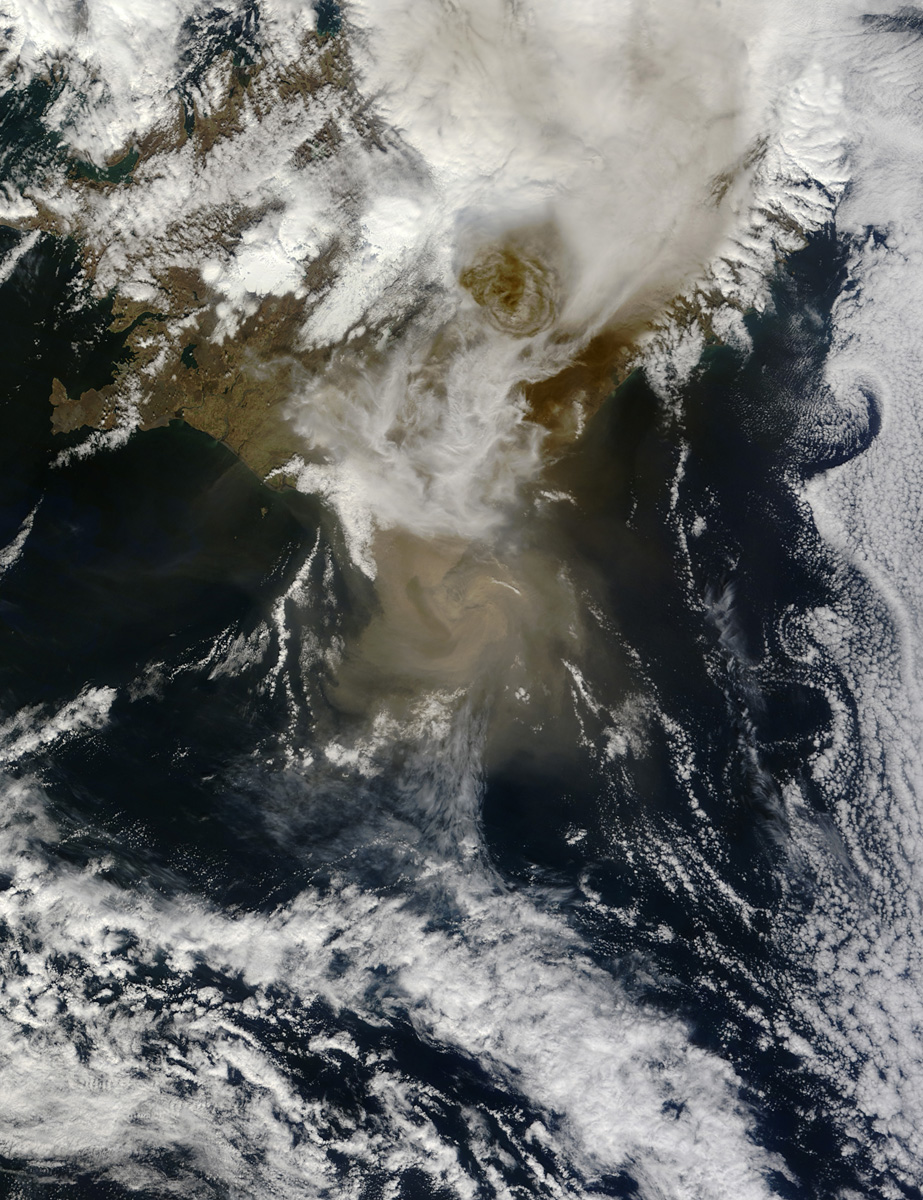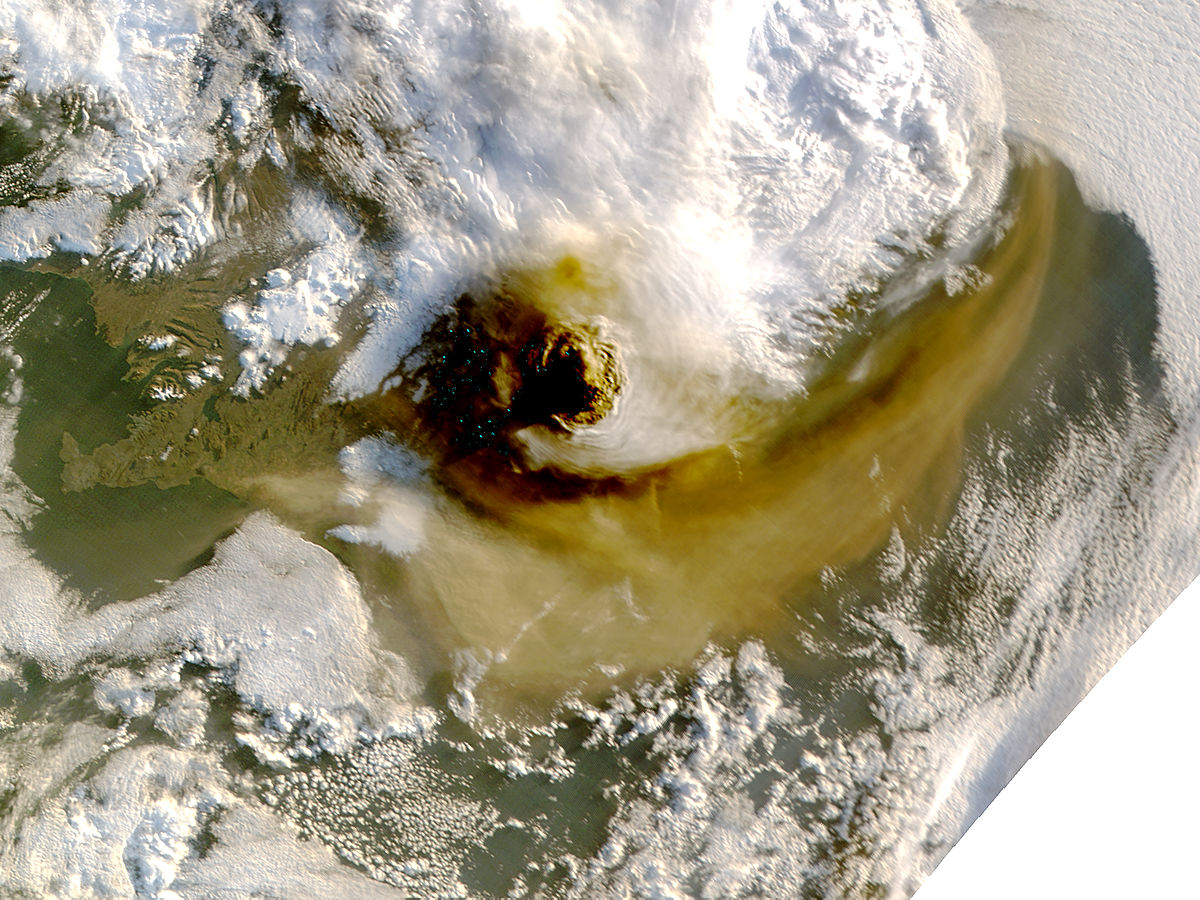Satellite Photos Show Iceland's Grimvotn Volcano Eruption From Space

The vast ash cloud spewing from Iceland's Grimvotn volcano is unmistakable from space in new photos snapped by NASA satellites.
The photos were taken just eight hours apart on May 22, just one day after the May 21 Grimsvotn volcano eruption began to unleash its huge plume of ash and steam. They reveal a huge cloud of ash that shot 12 miles (15 km) above sea level at its peak. [>Satellite photos of Grimvotn volcano eruption]
The Grimvotn volcano began erupting Saturday at 5:30 p.m. local time on May 21. The next day, NASA's Aqua satellite spotted the eruption at about 5 a.m. local time, showing the volcano plume as a huge, dark blemish at the center of a field of white clouds.
Eight hours later, NASA's Terra satellite caught a natural color view of the volcano from orbit. That image, recorded at about 1 p.m. local time, revealed the Grimvotn plume as a vast cauldron of hot ash and steam.
In the Terra image, the plume directly above the volcano summit towers over the surrounding clouds and is made up of a roughly circular cloud. Ash has rained down around surrounding regions, coating the snow-covered regions to the volcano's southeast in a dark brown gloom.
The volcano has already triggered some spectacular lightning storms, and actually spawned about 1,000 times more lightning strikes per hour than the eruption of Iceland's last major volcano event, Eyjafjallajokull. [Photos of Grimsvotn Volcano Lightning Show]
The Grimvotn volcano's initial plume soared higher into the atmosphere than the Eyjafjallajokull eruption 14 months ago. Eyjafjallajokull belched so much ash into the sky that it shut down air traffic across much of Europe.
Breaking space news, the latest updates on rocket launches, skywatching events and more!
But while Grimvotn's ash plume did reach higher than that of Eyjafjallajokull, the effects on air transportation are not expected to be as severe since the cloud was forecast to move towards the northeast, according to the Icelandic Meteorological Office.
"In addition, the ash content was coarser and therefore less likely to remain airborne long enough to reach European airspace," NASA officials said in an image description. "Some volcanic ash models, however, suggested that Grimvotn's ash could interfere with flights in the United Kingdom and Ireland beginning on May 24."
Iceland's largest airport Keflavik did close due to the plume, officials added.
Large portions of the Grimvotn volcano lie beneath the Vatnajokull Glacier, so when the recent eruption did begin on May 21, it originated below the glacier. Such eruptions can cause "glacier outburst floods, or jokulhlaups," NASA officials explained. But a previous outburst flood from the region last year should make a large flood during the current eruption unlikely, according to the Icelandic Meteorological Office.
Follow SPACE.com for the latest in space science and exploration news on Twitter @Spacedotcom and on Facebook.

Space.com is the premier source of space exploration, innovation and astronomy news, chronicling (and celebrating) humanity's ongoing expansion across the final frontier. Originally founded in 1999, Space.com is, and always has been, the passion of writers and editors who are space fans and also trained journalists. Our current news team consists of Editor-in-Chief Tariq Malik; Editor Hanneke Weitering, Senior Space Writer Mike Wall; Senior Writer Meghan Bartels; Senior Writer Chelsea Gohd, Senior Writer Tereza Pultarova and Staff Writer Alexander Cox, focusing on e-commerce. Senior Producer Steve Spaleta oversees our space videos, with Diana Whitcroft as our Social Media Editor.


